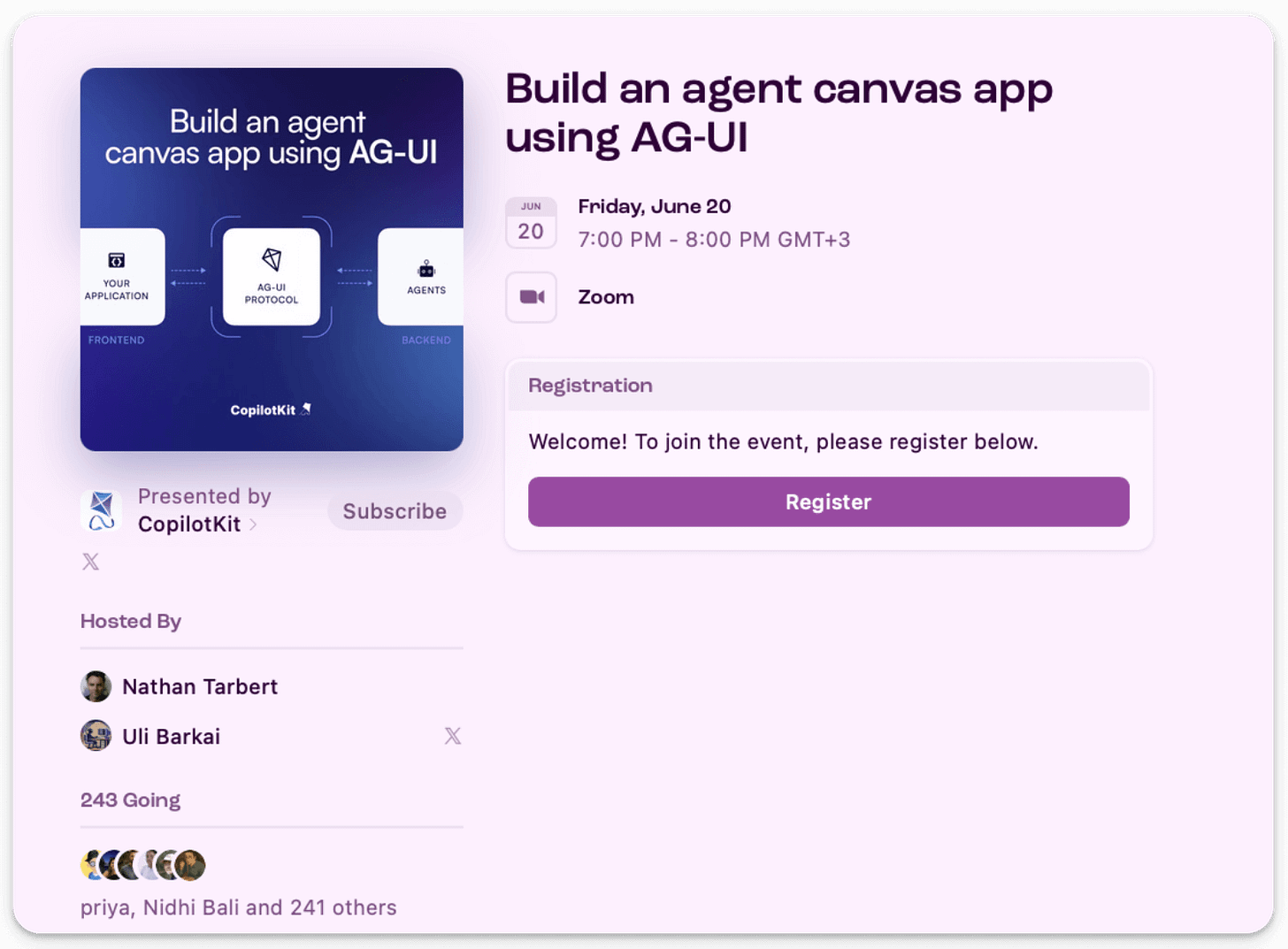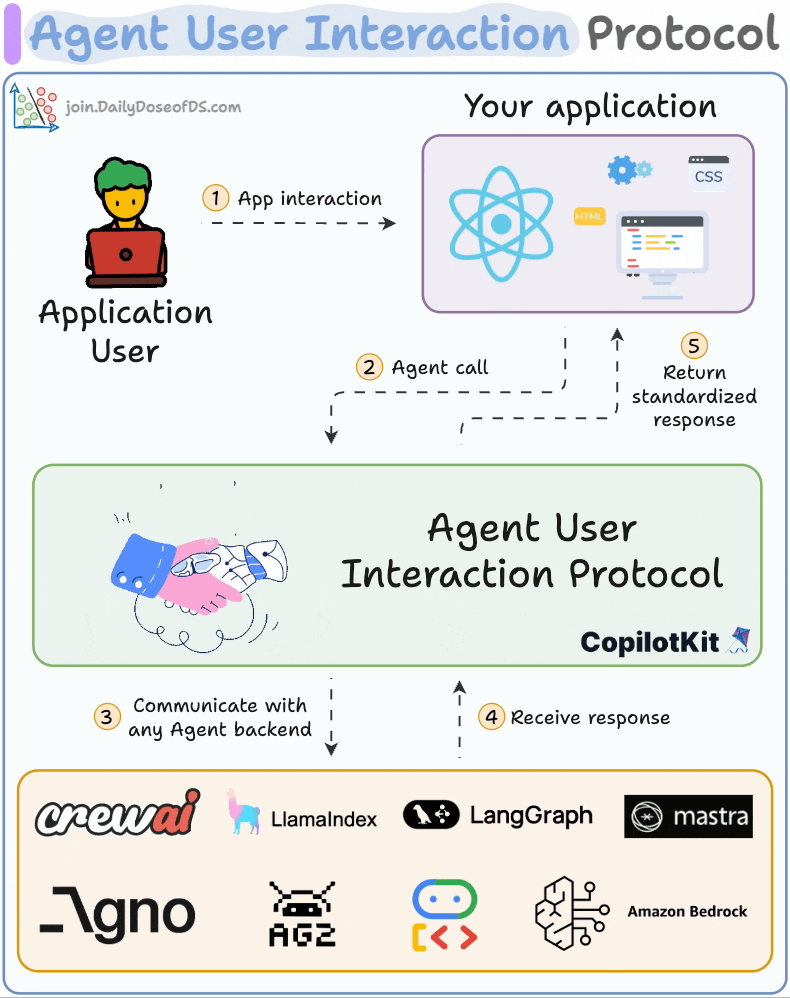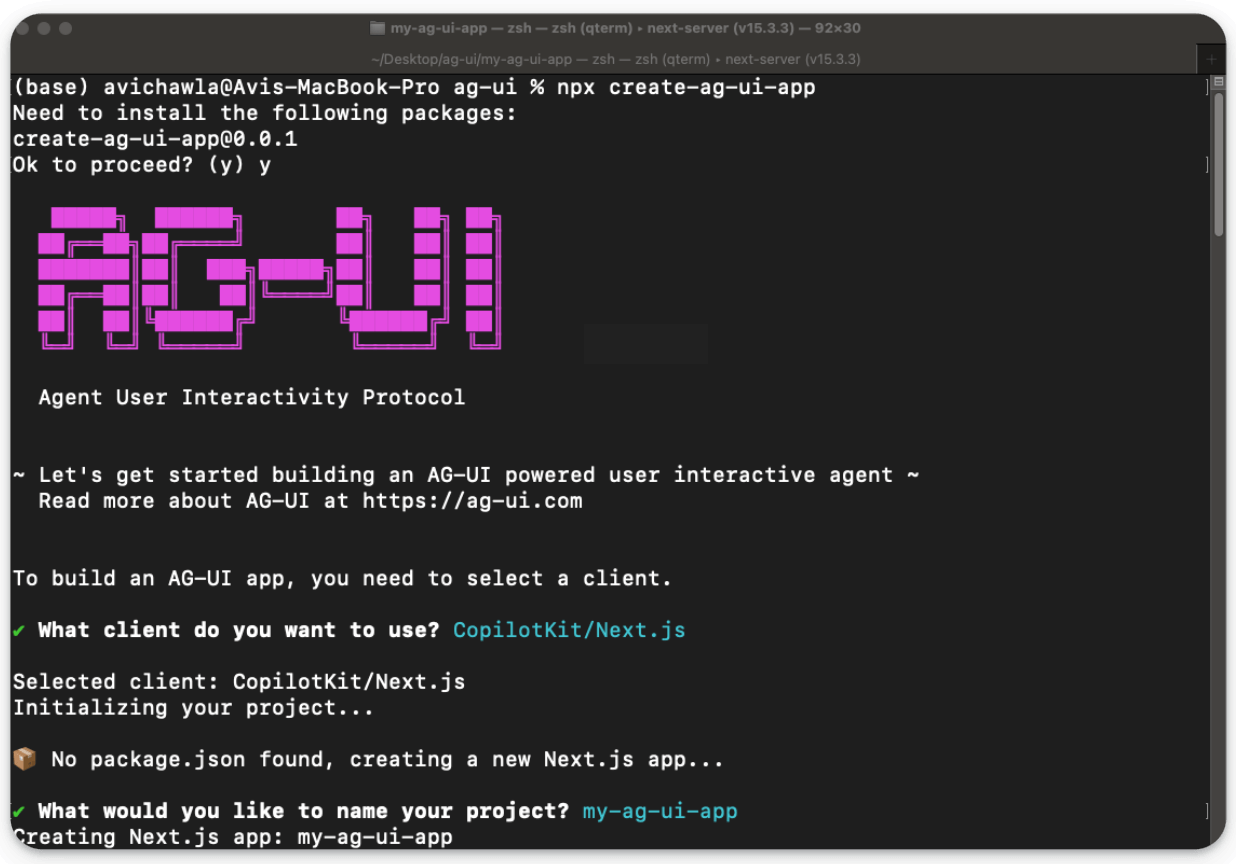Updates to the AG-UI Protocol
Next big thing after MCP and A2A.
We talked about the Agent to User Interaction Protocol last month, which serves as the missing link in the protocol stack:
MCP connects Agents to Tools.
A2A connects Agents to other Agents.
AG-UI connects Agents to Users.
Despite being early, it quickly became the interaction backbone for most agentic apps, gaining ~4,000 stars on GitHub in a couple of weeks.
Yesterday, several key updates were made to AG-UI.
Let’s understand them!
A quick note
The AG-UI team is organizing a free hands-on online workshop where you can learn how to build an agent app using AG-UI:
You can register for the session for free here →
The problem (and a quick recap)
LangGraph, CrewAI, etc. let you build powerful multi-step agentic workflows:
But when you bring that Agent into a real-world app, you want to:
Stream LLM response token by token, without building a custom WebSocket.
Display tool execution progress in real-time, pause for human feedback, without blocking or losing context.
Sync large changing objects (like tables) without re-sending everything to UI.
Let users interrupt, cancel, or reply mid-agent run, without losing context.
Moreover, if you use LangGraph, the front-end will implement custom WebSocket logic, messy JSON formats, and UI adapters specific to LangGraph.
But to migrate to CrewAI, everything must be adapted.
AG-UI (Agent-User Interaction Protocol) is an open-source protocol that standardizes the interaction layer between backend agents and frontend UIs:
This allows you to write your backend logic once, hook it into AG-UI, and everything just works:
LangGraph, CrewAI, Mastra, etc., all can emit AG-UI events.
UIs can be built using CopilotKit components or your own React stack.
What’s New in AG-UI?
From 4 to 16 Event Types
AG-UI now defines 16 standardized event types (earlier there were 4), covering everything an agent might do during its lifecycle. That means:
TEXT_MESSAGE_CONTENTfor token streamingTOOL_CALL_STARTandTOOL_CALL_ENDfor real-time tool trackingSTATE_DELTAfor shared state updatesAGENT_HANDOFFto transfer control between agents
This makes AG-UI expressive enough for complex, interruptible, real-time apps—far beyond simple chat UIs.
Ecosystem growth
LangGraph, CrewAI, Mastra, AG2, Agno, or LlamaIndex, all now support AG-UI.
With the adapter architecture, even legacy agents can emit AG-UI-compatible events without deep rewrites.
Once the frontend speaks AG-UI, it’s automatically compatible with every supported agent framework.
AG-UI is becoming the norm for the interactivity layer for the agent ecosystem.
You can try this out with a single command:
npx create-ag-ui-appIt spins up a fully functional starter with:
Agent backend
Streaming frontend UI
Built-in support for shared state, tool calling, and event-based updates
AG-UI allows Agents to do more than just reply with text and make them feel like part of the app.
The team is also organizing a free hands-on online workshop where you can learn how to build an agent canvas app using AG-UI:
You can register for the session for free here →
Here are some more resources to learn more about AG-UI:
Thanks for reading!









Please also post a tutorial on the Agent User Interaction Protocol (AG-UI)